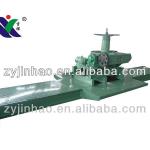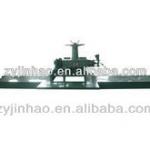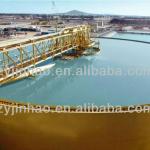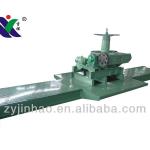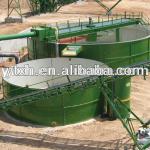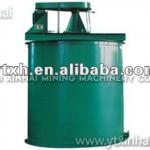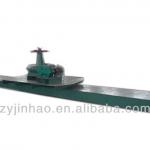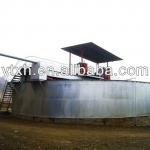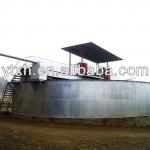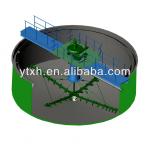High dehydration rate sludge thickener
| Type:Mining Thickener | Condition:New | Application:concentrate and tailings dehydration,dehydration, desliming etc | Motor Type:AC Motor |
| Production Capacity:above 85% | Place of Origin:Henan China (Mainland) | Brand Name:XKJ | Model Number:NZS |
| Certification:ISO9001:2008,CE | Warranty:One year except wearing parts | After-sales Service Provided:Engineers available to service machinery overseas | Manufacture standard:accord with industrial standard |
| quality control:go through five checks | using life:more than 3 years | Product quality:reliable | recovery rate:high |
| workflow:design by our engineers | company experience:more than 35 years | spare parts:supply by us | price:competitive |
| Delivery timely:duly |
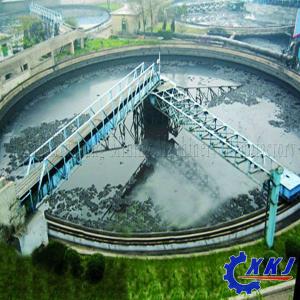
Introduction
Thickeners are used for dewatering slurries of either tailings or product. A thickener is a large circular tank that is used to settle out the solid material from the water in the feed slurry.It is widely used for dealing with slime, wastewater, waste residue in metallurgy, mine, coal, petrochemical industry, building materials, environmental protection department etc.
Features
- Deaeration cell is provided to prevent solid particles from attaching to bubbles so that solid particles can fall like a parachute.
- The mineral-feeding pipe is lower than the pulp surface, it prevents the air to be brought in while feeding.
- Inner overflow weir is equipped to make the pulp flow on pre-designed route, avoiding short circuit, enlarging the sedimental area.
- The peg linear is changed from oblique lines to curves. So the discharging underflow has higher density, and treatment capacity is enhanced.
Application
It is widely used for dealing with slime, wastewater, waste residue in metallurgy, mine, coal, petrochemical industry, building materials, environmental protection department etc.
Working principle
The materials are pumped into the feed-well, at the center of the thickener, which is close to the top. The thickened mass is moved toward the bottom center of the thickener by large rakes that rotate around the tank. Rotation speed is very slow, and drive torques can be high, especially for larger diameter thickeners. Drive torque is usually monitored continuously, as high densities could cause failure of the rakes and drive equipment. Rakes may have the capacity to be raised to reduce drive torque. The thickened slurry, also called thickener underflow, is pumped out of the bottom of the thickener.
Technical Parameter
| Model | D of the tank (mm) | Depth of the tank (mm) | Sedimental area (m2) | capacity (t/d) | Motor model | Motor power (kw) |
| NZS-2.5 | 2500 | 1850 | 4.9 | 5-10.8 | Y90L-6 | 1.1 |
| NZS-3A | 3000 | 1800 | 7 | 5-23.3 | Y100L-6 | 1.5 |
| NZS-3 | 3600 | 10.2 | 5-28.5 | |||
| NZS-5 | 5000 | 2956 | 16 | 16-90 | Y90L-4 | |
| NZS-6 | 6000 | 28.3 | 98 | |||
| NZS-7 | 7000 | 3000 | 38.5 | 140 | Y112M-6 | 2.2 |
| NZS-8 | 8000 | 3318 | 50.2 | 185 | Y132S-6 | 3 |
| NZS-9 | 9000 | 3376 | 63 | 210 | ||
| NZS-12 | 12000 | 3600 | 113 | 370 | ||
| NZS-15 | 15000 | 4000 | 176 | 580 | Y132(M2)-6 | 5.5 |
| NZS-18 | 18000 | 4400 | 255 | 960 | YCT200-413 | 7.5 |
| NZS-20 | 20000 | 4400 | 315 | 1400 | Y160(M2)-8 |

| Packaging Detail:seaworthy container or as per your deman |
| Delivery Detail:25 days after receive your downpayment |




